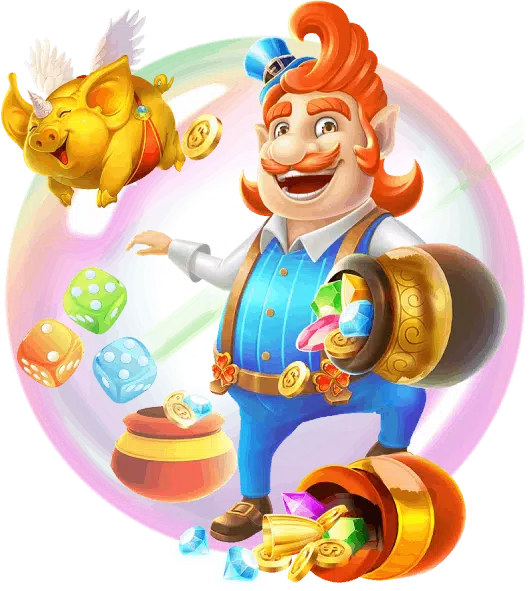
sawan66 เป็นเว็บไซต์หรือแพลตฟอร์มการพนันออนไลน์ที่มีความเชื่อถือและนิยมอย่างแพร่หลายในวงการนักพนัน sawan888สล็อต ด้วยสถานะที่มั่นคงและประสิทธิภาพที่ดีในการให้บริการ มีการออกแบบที่ให้ความรู้สึกสมจริงและสวยงาม ผู้เล่นสามารถเข้าถึงและนำเสนอตัวเลือกเกมคาสิโนออนไลน์ที่หลากหลาย sawan 666 รวมถึงเกมส์กีฬาต่าง ๆ ที่น่าสนใจ sawan66 ลักษณะการเล่นที่ง่ายและตื่นเต้น เลือกเล่นสล็อตที่มีหลายรูปแบบเกมที่มีฟีเจอร์และโบนัสที่น่าตื่นเต้น เพื่อเพิ่มโอกาสในการชนะรางวัลใหญ่ sawanสล็อต
sawan66 เกมพนันออนไลน์ในรูปแบบ sawan66 ได้รับความนิยมอย่างแพร่หลายในปัจจุบัน ซึ่งสามารถอธิบายได้ด้วยสาเหตุต่อไปนี้
• ความหลากหลายในเกมการนำเสนอเกมพนันออนไลน์ที่หลากหลายและมีความน่าสนใจมากมาย ไม่ว่าจะเป็นเกมสล็อตที่มีหลากหลายรูปแบบและฟีเจอร์ที่ตื่นเต้น, บาคาร่า, รูเล็ต, ไฮโล, และเกมส์กีฬาต่าง ๆ ที่ผู้เล่นสามารถเลือกเล่นได้ตามความสนใจและความชอบของตน
• ประสบการณ์การเล่นที่น่าตื่นเต้น เกมพนันออนไลน์ มีประสบการณ์การเล่นที่น่าตื่นเต้น ด้วยภาพกราฟิกที่สวยงามและเสียงเอฟเฟกต์ที่สมจริง เพื่อให้ผู้เล่นได้สัมผัสประสบการณ์การเล่นที่มีความสนุกสนานและตื่นเต้นอย่างสูงสุด
• ความสะดวกสบายในการเข้าถึง sawan66 มีระบบการเข้าถึงที่ง่ายและสะดวกสบาย ผู้เล่นสามารถเข้าเล่นเกมได้ทันทีผ่านอุปกรณ์เช่นคอมพิวเตอร์, สมาร์ทโฟน หรือแท็บเล็ต ไม่ว่าจะเป็นในบ้านหรือเวลาอยู่นอกบ้าน
• ความปลอดภัยและความน่าเชื่อถือ เป็นแพลตฟอร์มที่มีความปลอดภัยและความน่าเชื่อถือสูง มีระบบรักษาความปลอดภัยที่เข้มงวด เช่น การเข้ารหัสข้อมูล การรักษาความลับ และการตรวจสอบความปลอดภัยอย่างสม่ำเสมอ เพื่อให้ผู้เล่นมั่นใจในการทำธุรกรรมและความเป็นส่วนตัวของตน
• บริการลูกค้าที่ดี ให้ความสำคัญกับการบริการลูกค้าอย่างเต็มที่ มีทีมงานที่มีความเชี่ยวชาญและพร้อมให้ความช่วยเหลือตลอด 24 ชั่วโมง ผู้เล่นสามารถติดต่อสอบถามหรือแจ้งปัญหาได้ตลอดเวลา
เนื่องจากความนิยมที่สูงของ sawan66 ไม่มีขั้นต่ำ ในปัจจุบัน หากเป็นผู้ที่สนใจการเล่นเกมพนันออนไลน์ คาสิโนเป็นทางเลือกที่น่าสนใจในการพัฒนาประสบการณ์การเล่นอย่างมีความสุขและปลอดภัย
นอกจากสล็อตที่เป็นเกมที่คนเล่นมากที่สุดและง่ายต่อการเข้าถึงใน sawan66 ยังมีเกมอื่น ๆ ที่คุณอาจสนใจเพิ่มเติม
1. บาคาร่า: เกมบาคาร่าเป็นเกมไพ่ที่มีความเรียบง่ายและเป็นที่นิยมอย่างมากในวงการพนัน ผู้เล่นเพียงแทงว่าฝ่ายของตนหรือฝ่ายของผู้เล่นรวมกันจะได้คะแนนใกล้เคียงกับ 9 มากที่สุด การเล่นง่ายและมีโอกาสชนะสูงทำให้เป็นที่นิยมอย่างต่อเนื่อง sawan 666
2. รูเล็ต: เกมรูเล็ตเป็นเกมที่ตัวเลขเป็นหลักในการเดิมพัน ผู้เล่นเลือกวางเดิมพันบนตำแหน่งต่าง ๆ บนลูกเหล็กหมุน โดยสามารถวางเดิมพันได้ในตัวเลขเดี่ยว, กลุ่มตัวเลข, หรือลักษณะอื่น ๆ ของตำแหน่งที่มีอยู่ การเล่นรูเล็ตสามารถให้ความตื่นเต้นและความสนุกสนานได้มากๆ
3. ไฮโล: เกมไฮโลเป็นเกมที่ใช้ลูกเต๋าในการเล่น ผู้เล่นเลือกเดิมพันตามผลของลูกเต๋าที่วางไว้ในถาด โดยมีตัวเลือกเดิมพันหลากหลาย เช่น วางเดิมพันที่จำนวนตาของลูกเต๋า, การเลือกตัวเลขเฉพาะ, หรือลักษณะอื่น ๆ ของลูกเต๋า การเล่นไฮโลเป็นการพนันที่เร้าใจและเพลิดเพลิน
4. โป๊กเกอร์: เกมโป๊กเกอร์เป็นเกมไพ่ที่ได้รับความนิยมอย่างแพร่หลาย ผู้เล่นจะได้รับไพ่ 5 ใบและสามารถเลือกจัดลำดับและเลือกเล่นเพื่อสร้างค่ามือที่ดีที่สุด โป๊กเกอร์มีหลากหลายรูปแบบเกม เช่น เท็กซัสโป๊กเกอร์, โป๊กเกอร์ไฮโล, และอื่น ๆ ที่คุณสามารถเลือกเล่นได้ตามความชอบของคุณ.
5. แบล็คแจ็ค: เกมแบล็คแจ็คเป็นเกมไพ่ที่ต้องการความสนใจและกลยุทธ์ ผู้เล่นต้องพยายามให้มูลค่าไพ่ของตนใกล้เคียงกับ 21 มากที่สุดโดยไม่เกิน การเล่นแบล็คแจ็คอาจมีกลยุทธ์พิเศษเพื่อเพิ่มโอกาสชนะ เช่น การนับไพ่หรือการตัดสินใจในการเรียกเพิ่มไพ่
6. ไพ่เสือมังกร: เกมไพ่เสือมังกรเป็นเกมที่มีตำแหน่งและความต้องการกลยุทธ์ต่อสู้กันระหว่างไพ่เสือกับไพ่มังกร ผู้เล่นสามารถวางเดิมพันในฝ่ายที่คาดว่าจะชนะหรือเสมอกันได้ การเสี่ยงโชคและกลยุทธ์เป็นสิ่งที่สำคัญในการเล่นไพ่เสือมังกร
สามารถเลือกเล่นเกมคาสิโนเหล่านี้หรือเกมอื่น ๆ ตามความชอบ sawan 66 สล็อต โดยที่สามารถเพลิดเพลินและตื่นเต้นไปกับประสบการณ์การเล่นคาสิโนออนไลน์ได้อย่างเต็มที่
การเล่น sawan66 slot เป็นทางเลือกที่สนุกและตื่นเต้นที่ไม่มีข้อจำกัดในเรื่องของการเข้าร่วม เกมสล็อต มีความสนุกสนานและบรรยากาศที่น่าตื่นเต้นที่จะทำให้คุณเพลิดเพลินไปกับการเล่นเกมแห่งความโชคดี นอกจากนี้ยังมีความสะดวกสบายในการเข้าถึง เพราะคุณสามารถเล่นผ่านอุปกรณ์ที่คุณมีอยู่ เช่น คอมพิวเตอร์, สมาร์ทโฟน หรือแท็บเล็ต ตลอดจนสามารถเข้าเล่นได้ตลอด 24 ชั่วโมงทุกวัน sawanสล็อต sawan66 ทำให้คุณสามารถเพลิดเพลินกับเกมสล็อตในเวลาที่เหมาะสมกับคุณเอง ทั้งนี้คุณยังสามารถเลือกเล่นเกมสล็อตจากหลากหลายรูปแบบและธีมที่ถูกใจคุณ ดังนั้น ไม่มีข้อจำกัดในเรื่องของความสนุกและความตื่นเต้นเมื่อเข้าร่วมสนุกกับการเล่น พร้อมรับโบนัสและโปรโมชั่นที่น่าตื่นเต้นสำหรับผู้เล่น slot ที่จะช่วยเพิ่มโอกาสในการชนะและเพิ่มความสนุกในการเล่น เช่น โบนัสต้อนรับ, เงินคืน, และโปรโมชั่นพิเศษอื่น ๆ ที่มีอยู่ในระหว่างเวลาที่คุณเข้าร่วมเล่น มาพร้อมกับกราฟิกที่สวยงามและเอฟเฟกต์ที่น่าทึ่งที่จะทำให้ประสบการณ์การเล่นของคุณน่าตื่นเต้นมากยิ่งขึ้น การออกแบบที่ดีและเสียงที่น่าตื่นเต้นทั้งหมดนี้จะเพิ่มความสมจริงและความสนุกให้กับการเล่นอีกด้วย sawan888สล็อต

เว็บไซต์ sawan66 มีระบบการเงินที่สะดวกและปลอดภัย ทำให้คุณสามารถทำธุรกรรมทางการเงินได้อย่างสะดวกและรวดเร็ว โดยใช้ฟีเจอร์ sawan66 wallet ที่มีระบบออโต้ในเว็บไซต์ นี่คือขั้นตอนง่ายๆ เมื่อต้องการทำธุรกรรมทางการเงิน สามารถเลือกทำธุรกรรมการเงินที่ต้องการ ในกรณีฝากเงิน สามารถเลือกเมนู “ฝากเงิน” และระบุจำนวนที่ต้องการฝากเข้าสู่บัญชี ในกรณีถอนเงิน สามารถเลือกเมนู “ถอนเงิน” และระบุจำนวนที่ต้องการถอนจากบัญชี และยังสามารถตรวจสอบสถานะของธุรกรรมการเงินได้ในหน้าประวัติธุรกรรมอีกด้วย ให้ความสะดวกและความปลอดภัยในการทำธุรกรรมทางการเงินภายในเว็บไซต์ และระบบออโต้ทำให้คุณสามารถทำธุรกรรมได้รวดเร็วและมีประสิทธิภาพ sawan66 และปกป้องข้อมูลและเงินให้เป็นอย่างดีในทุกๆ ครั้งที่ทำธุรกรรมในเว็บไซต์นี้ sawan 666
ต้องการเล่น sawan66 bet โดยไม่ต้องกังวล นี่คือบางเคล็ดลับที่อาจช่วยให้เพลิดเพลินไปกับประสบการณ์การเดิมพัน กำหนดยอดเงินที่สามารถจ่ายได้ นี่จะช่วยให้มีการวางแผนและควบคุมการเล่นอย่างมีระเบียบเรียบร้อย ศึกษาและเลือกเกมที่เหมาะกับความสนใจและรูปแบบการเดิมพัน เล่นเกมที่เข้าใจและมีความชำนาญเพื่อเพิ่มโอกาสในการชนะ โบนัสและโปรโมชั่นที่ sawan66 มีเสนอและใช้ให้เต็มที่ เช่นโบนัสต้อนรับ, เงินคืน, และโปรโมชั่นพิเศษอื่น ๆ เพื่อเพิ่มมูลค่าในการเดิมพัน เล่นเมื่อมีเวลาว่างและอารมณ์ที่ดี เพื่อให้สามารถเพลิดเพลินและเสี่ยงด้วยความสบายใจ อย่าลืมว่าการเล่นเกมพนันออนไลน์เป็นเรื่องของความสนุกและความเพลิดเพลิน ดังนั้น, ให้เล่นอย่างมีสติประสงค์และไม่ให้เกิดความกังวลมากเกินไ sawan888สล็อต

สำหรับ sawan66 sawanสล็อต มีระบบที่สะดวกและปลอดภัยที่อาจน่าสนใจ นี่คือเหตุผลที่ทำให้น่าสนใจ มีอินเตอร์เฟซที่ใช้งานง่ายและใช้งานได้สะดวก สามารถเข้าถึงเกมคาสิโนและรายการอื่นๆ ได้โดยง่าย ไม่ว่าจะเป็นการเล่นสล็อต, บาคาร่า, รูเล็ต, หรือเกมอื่นๆ ให้ความสำคัญกับความปลอดภัยของผู้เล่น มีระบบการเข้ารหัสข้อมูลที่มีความปลอดภัยสูง เพื่อปกป้องข้อมูลส่วนตัวและการทำธุรกรรมทางการเงิน มีระบบการเงินที่มีประสิทธิภาพ ทำให้สามารถฝากเงินและถอนเงินได้อย่างรวดเร็วและสะดวกสบาย นอกจากนี้ยังมีรายละเอียดเกี่ยวกับการทำธุรกรรมทางการเงินที่ชัดเจน เพื่อให้มีความมั่นใจในการทำธุรกรรม มีทีมงานบริการลูกค้าที่พร้อมให้ความช่วยเหลือและแก้ไขปัญหาที่เกี่ยวข้องกับเกมหรือการทำธุรกรรมทางการเงินสามารถติดต่อทีมงานได้ตลอด 24 ชั่วโมง คาสิโน sawan66 บริการด้วยความสะดวกสบาย ความปลอดภัย ระบบการเงินที่มีประสิทธิภาพ และการบริการลูกค้าที่เป็นเอกซ์เพิ่ม น่าสนใจที่ต้องการประสบการณ์การเล่นคาสิโนออนไลน์ที่มีความเพลิดเพลินและปลอดภัย
เว็บเกมเดิมพันออนไลน์ รวมแบรนด์เกมยอดนิยมจากทั่วโลก เรามีให้บริการมากกว่า 30 แบรนด์เกมชั้นนำ ครบทุกรูปแบบการเดิมพันออนไลน์ คาสิโน สล็อต พนันกีฬา ยิงปลา มวย บอล ครบทุกรูปแบบ เว็บได้รับอนุญาตอย่างถูกต้อง เว็บตรงเล่นง่าย ปลอดภัย ยุติธรรมทุกการเดิมพัน พร้อมด้วยประสบการณ์บริการลูกค้ามากกว่า 5 ปี.